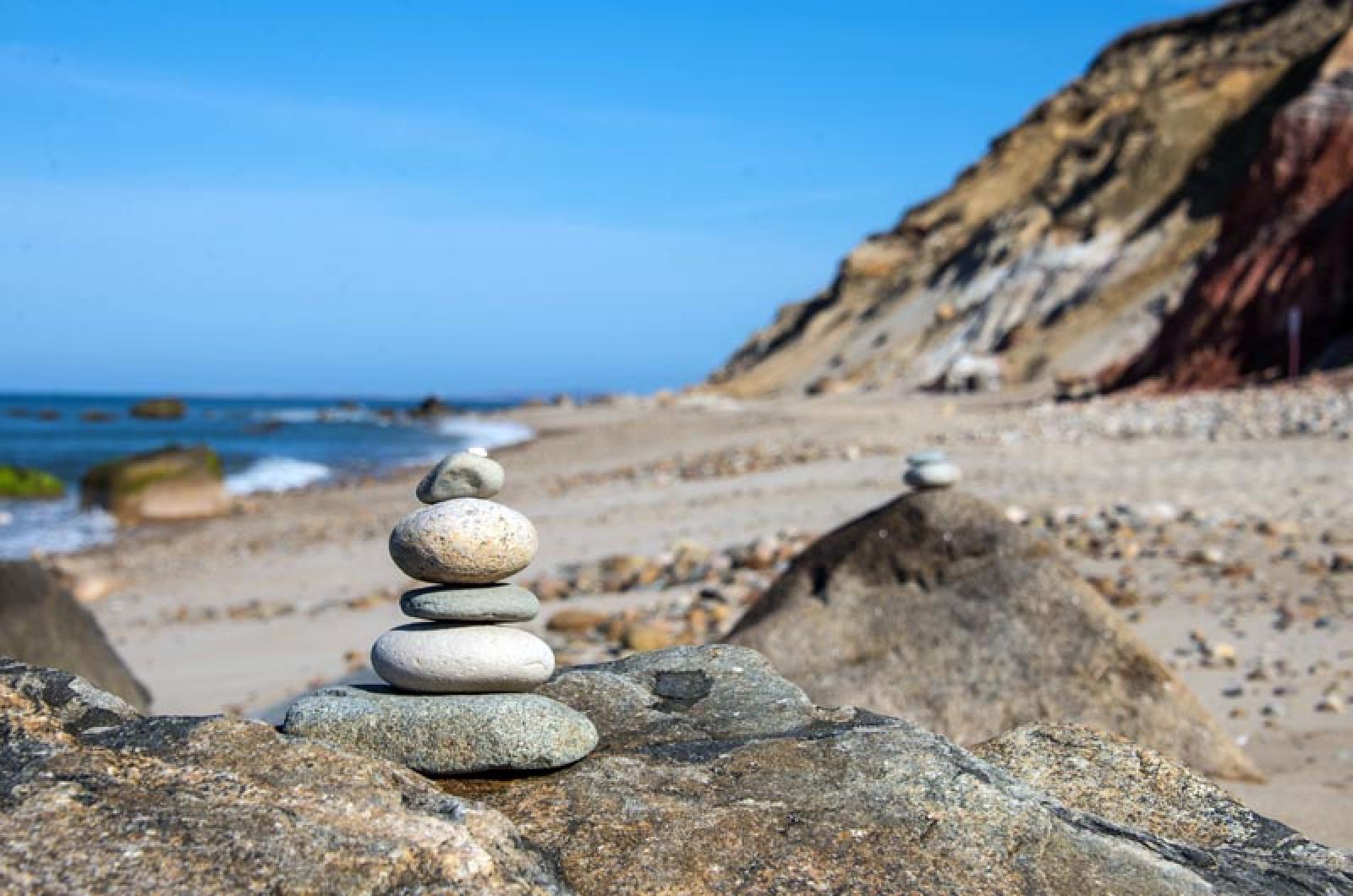Looking for luck? Head to the nearest rocky beach.
Nature provides many totems to bring luck. There are four-leaf clovers, rabbits’ feet, albino squirrels, albatrosses, bamboo, wishbones, white elephants, rainbows and ladybugs, among others.
Each, though, has its limitations. It is really tough to find a four-leaf clover, same for albino squirrels, and if you are inland, forget about that albatross. Bamboo is ubiquitous on the Island, but I would suggest that this invasive species is more of a problem than a talisman. Even those ladybugs that are coming into your home this time of year are looking for warmth rather than bringing blessings.
And humorist R.E. Shay had this perfect response to the rabbit’s foot: “Depend on the rabbit’s foot if you will, but remember it didn’t work for the rabbit.”
A favorite good luck charm for Islanders, and one that is not impossible to find, is the striped beach stone. Also called lucky stones, ringed stones and banded rocks, these pebbles make a beach walk even better. To be considered lucky, the stripe or band must go around the entire rock without being interrupted or broken.
Many different rocks fall into the lucky rock category. There are the dull gray ones with thick white bands, purple ones with thin lines, and shiny black ones crisscrossed with stripes going in all directions. All of them possess beauty and luck for those that believe.
Their power exists across cultures and throughout history. Celtic myths describe stones with ‘magic rings’ that make the bearer powerful, and can even confer invisibility on those in possession of this variety of stone. Also known as wishing stones, this type of unique pebble allowed for wishes that would be answered after they were thrown in to the ocean.
An assortment of factors produces these special stones. Geologically speaking, heat, pressure, water, chemistry, erosion and compression are all influences. Often those white bands or stripes, called veins, are quartz or calcite.
The quartz filled the fissures or cracks in rocks. The calcite was formed from the precipitation of calcium carbonate from water running over and through the rocks. Others are formed from sedimentary rocks (those with layers of minerals) that were folded and thrusted, allowing those horizontal layers to become curving lines.
Add time and tides washing these rocks to and fro, and they become smoother and rounder and end up on our shorelines.
No one really needs an additional reason to take a walk on one of our Island beaches, beyond their beauty and inspiration, and your health and happiness. The opportunity to find a good luck charm may be an enticement, but remember Douglas MacArthur’s words: “The best luck of all is the luck you make yourself.”
Suzan Bellincampi is director of the Felix Neck Wildlife Sanctuary in Edgartown, and author of Martha’s Vineyard: A Field Guide to Island Nature.




Comments (2)
Comments
Comment policy »